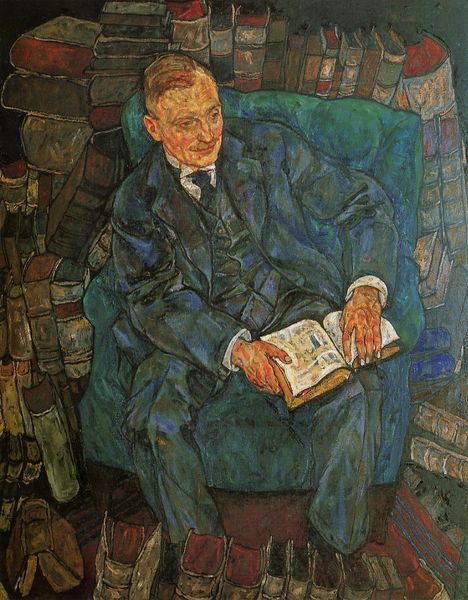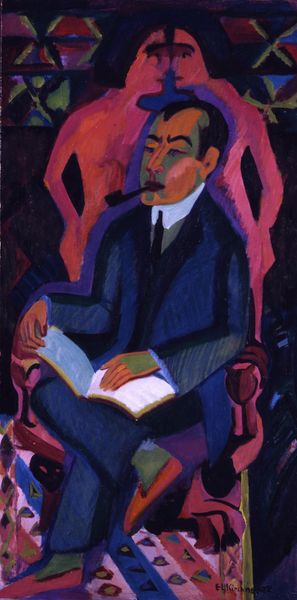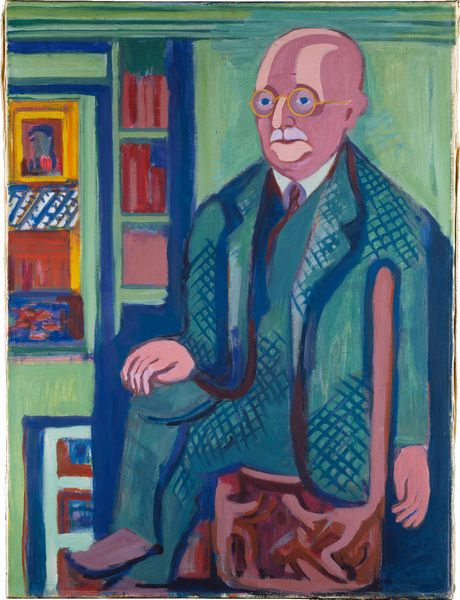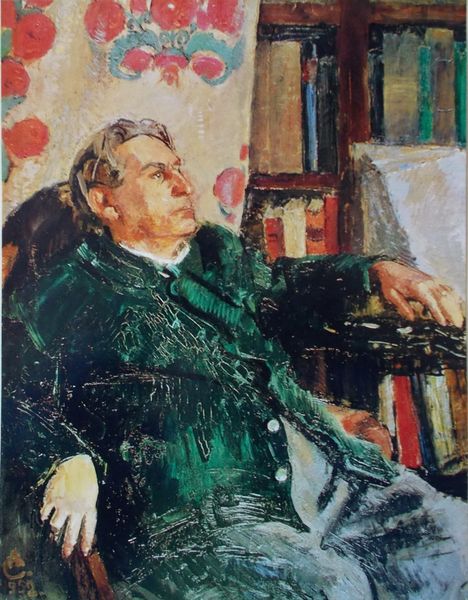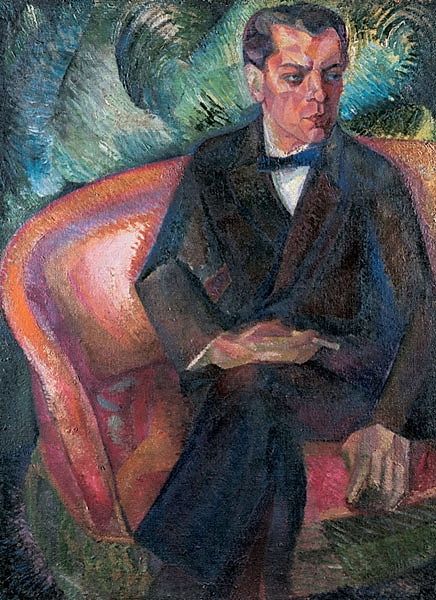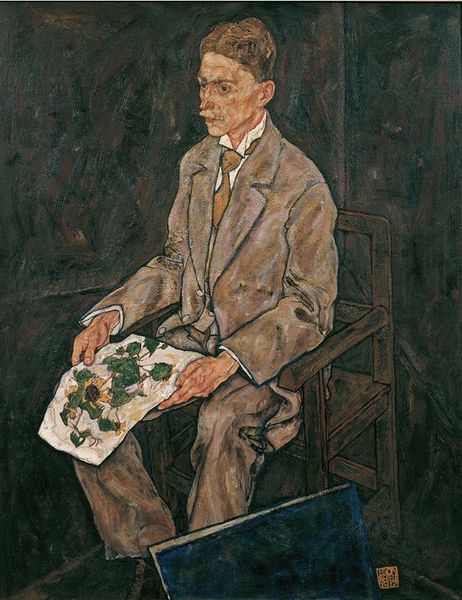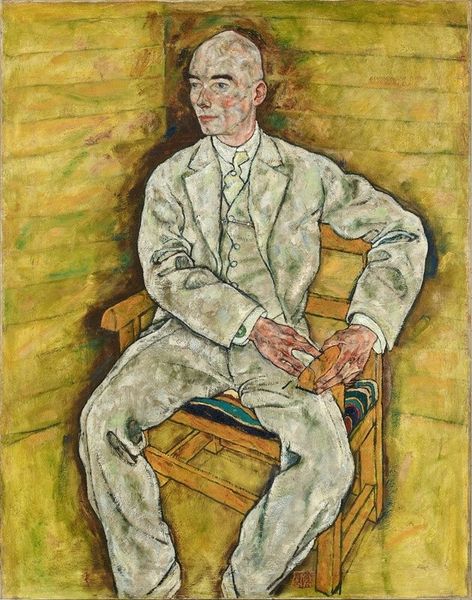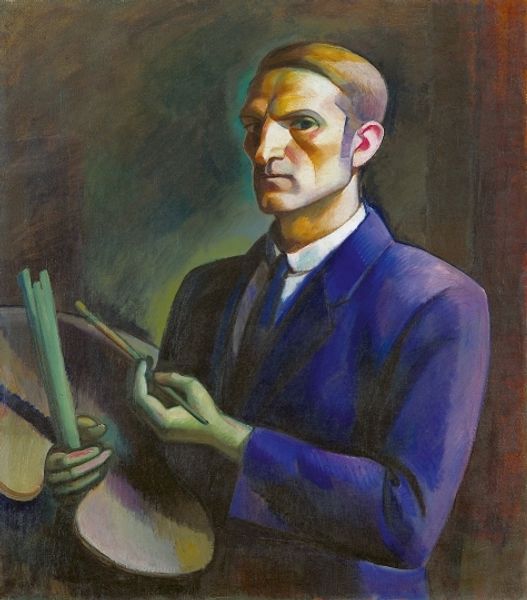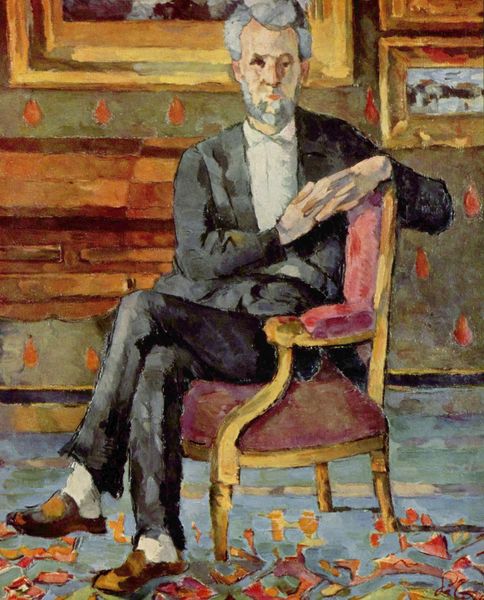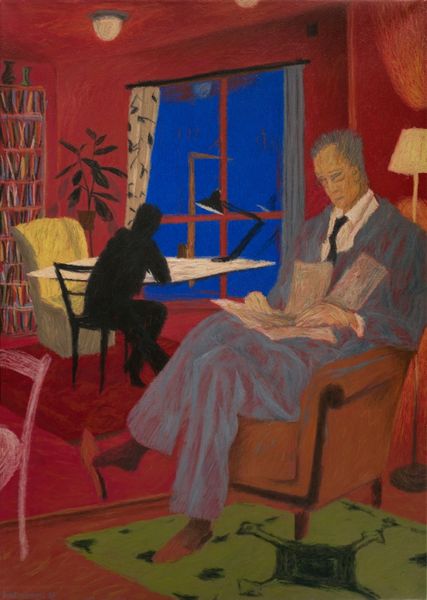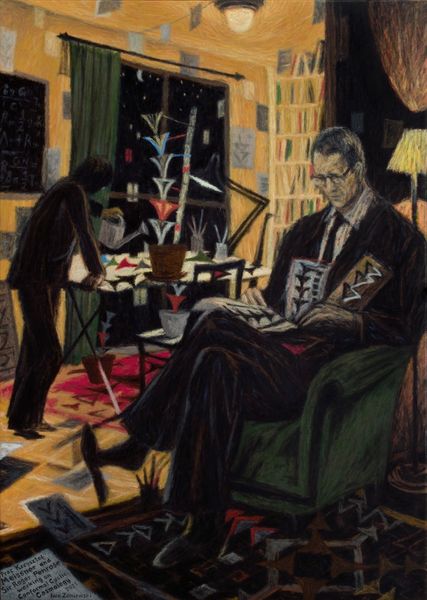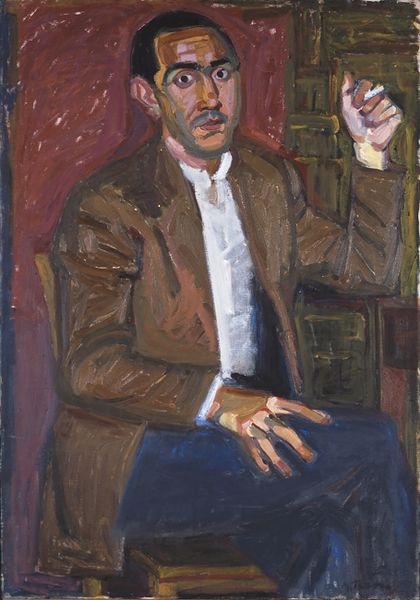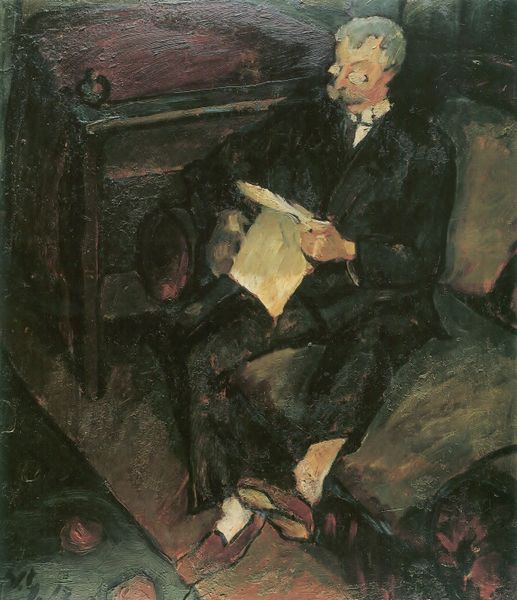
oil-paint
#
portrait
#
figurative
#
oil-paint
#
figuration
#
oil painting
#
expressionism
#
modernism
Copyright: Public Domain: Artvee
Editor: This is Egon Schiele’s 1918 oil painting, "Dr. Hugo Koller." I find the encirclement of books somewhat overwhelming, giving the sitter a feeling of being intellectually trapped, even claustrophobic. What is your take on this portrait? Curator: Given Schiele's place within Viennese society and the context of early 20th century intellectual circles, it's vital to understand what this visual language would have communicated. Consider the function of portraiture during that era. It wasn't simply about likeness, but about establishing social standing and cultural identity. What does the sheer quantity of books suggest about Dr. Koller’s public image, and Schiele's role in crafting that? Editor: I suppose it signifies knowledge and scholarly pursuit. The books become almost performative, like props for a carefully constructed persona. The green armchair looks very inviting against the backdrop of the books! Curator: Exactly. The staged nature hints at the performative aspect of intellectual identity and class in Vienna at the time, particularly amidst social and political upheaval. Schiele's characteristic distortions, however, puncture that sense of established order. Does the portrait feel celebratory or critical, or perhaps somewhere in between? Editor: It's definitely ambiguous, walking a tightrope. I initially felt claustrophobia, but it's mixed with a sense of almost satirical reverence, so a critical reading. Curator: Precisely. By depicting Dr. Koller engulfed but almost indifferent within his library, Schiele may be commenting on the disconnect between intellectual pursuits and lived experience. Consider how museums operate: isn’t there always a play between display and what that very arrangement signals? What can an object—in this case, the painting itself—do in terms of engaging public sentiment? Editor: This portrait reveals the push and pull between Schiele and the intellectual establishment he both belonged to and seemed to critique. Thanks for the food for thought! Curator: It also illustrates how portraiture and collecting practices, by artists and institutions, often intersect and comment on societal power structures, reflecting both appreciation and critique, which I'm sure you'll encounter in your future academic life!
Comments
No comments
Be the first to comment and join the conversation on the ultimate creative platform.
